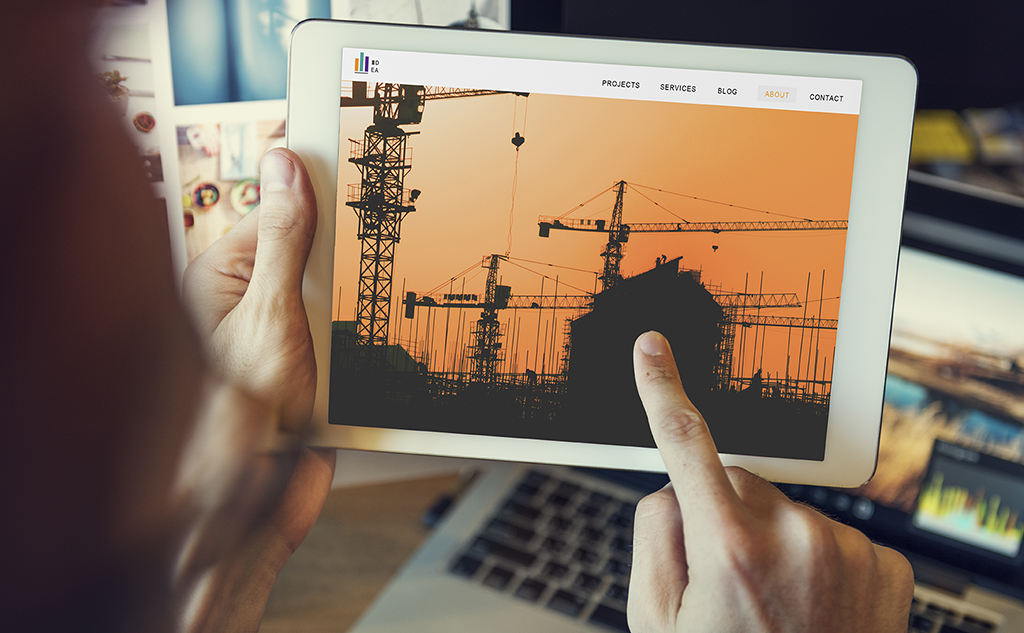As digital technologies continue to develop, Industry 4.0 seems to offer attractive productivity gains and cost reduction. But are such advances sustainable and compatible with environmental impact reduction?
What is Industry 4.0?
Industry 4.0 — also known as the future factory — is an interconnected industrial production system. The circulation of information within the factory and its ecosystem, is significantly increased. After being initially developed for controlling machinery in real time using the proliferation of smart sensors, its scope of application is considerably wider today.
For many, this future factory represents the fourth industrial revolution, after mechanisation in the 18th century (steam), automation in the 19th century (electricity and oil) and mass production and globalisation in the 20th century (electronics and IT).
Industry 4.0 heralds the advent of the smart connected factory. This smart factory incorporates the principles of:
- Smart production: optimising production via a new collaboration between humans and machines.
- Smart services: interconnecting systems within a site but also outwards towards external partners and clients.
- Smart energy: the need for sustainability.
Industry 4.0: what are the challenges for 2020?
The future factory, yes, but what for? Its primary objectives are still productivity gains, cost reduction and the transition to the mass customization era. For the more advanced countries, the main challenge from this fourth industrial revolution lies in turning the globalisation trend to their advantage.
Industry 4.0 has to be able to produce faster, be more responsive to changing demand and correct itself independently through the principle of predictive maintenance. To do so, it can draw upon several major technological innovations including the IoT (internet of things), Cloud computing, cobotics, 3D printing and industrial digital twins.
Data and artificial Intelligence play a key role in ensuring an unparalleled level of adaptability in production systems. At the same time, industrial IoT and blockchain are revolutionising the traceability of flows and products. The emergence of industrial Smart Data is powering business intelligence.
And where do people fit into all this? In the smart factory the hierarchy is reversed: the factory is at the service of the employee, allowing the latter to focus their energies on taking strategic decisions. Technologies such as augmented reality, a powerful tool for faster understanding of complex data flows, come into their own here. It’s the rising power of cobotics — collaboration between human and robot — or the concept of human-machine interfaces (HMI).
So far the preserve of major industrial players, the factory of the future is already bearing fruit. One example is Siemens, which claims to have doubled productivity at its Amberg site in Germany (1).
Is Industry 4.0 compatible with the Sustainable Development Goals?
The ecological footprint of industry is colossal. In France alone the industrial sector is producing 17.8% of greenhouse gases (2). It’s also a major source of pollution and waste (37% of non-hazardous waste in France (3).
Yet with its National Low Carbon Strategy (SNBC – Stratégie Nationale Bas-Carbone) France has in 2020 affirmed its intention to develop “disruptive technologies” aimed at decarbonising industry. Can digital tools help reconcile industrial production and sustainable development? Views differ. Some believe that the environmental problems (extraction of raw materials, treatment of waste etc.) in reality are simply pushed south. “Explicit references to the environmental sustainability of production systems remain scarce”, notes the French Agency for Environment and Energy Management (Ademe) (4).
According to other experts, however, Industry 4.0 is a good fit, or is even essential; to better manage the environmental impact. Digital is even touted as THE lever to achieve clean industry. Ademe also notes that “a significant part of the energy gains (to be achieved by industry by 2030) is conditional upon the deployment of technologies both proven and innovative.”
Some examples of green innovations
3D printing is often cited as a useful environmental innovation from Industry 4.0. Its energy-saving benefits are well-documented. GE Aviation and Safran Aircraft Engines are two companies who have used it to reduce the weight of their LEAP engines by one-quarter, cutting their energy bills and CO2 emissions (5).
Alongside this, the IoT and artificial intelligence are increasingly integrated into energy optimisation strategies, particularly with respect to industrial robots. Smart Data likewise is yielding results. In France, we can cite the example of Energiency and its real-time analysis platform for energy performance data. The energy intelligence startup claims to be able to lower a factory’s energy consumption by 15%. And they are far from the only player positioning themselves in this niche.
Will the 4.0 factory be sustainable? While its primary objective remains greater productivity, faced with the climate emergency it’s clear that the environmental aspect will play an increasingly important role.
1) Source Techniques-ingenieur – https://www.techniques-ingenieur.fr/actualite/articles/lusine-4-0-cest-quoi-37271/
2) Le Monde.fr – lemonde.fr/les-decodeurs/article/2019/07/08/voiture-industrie-viande-quelles-sont-les-causes-du-rechauffement-climatique-en-france_5486767_4355770.html
3) Ministère de la Transition écologique et solidaire – https://www.ecologique-solidaire.gouv.fr/pollution-lair-origines-situation-et-impacts#:~:text=Les%20impacts%20de%20la%20pollution%20atmosph%C3%A9rique,ans%20pouvant%20d%C3%A9passer%202%20ans)
4) Ademe – https://www.ademe.fr/sites/default/files/assets/documents/industrie-numerique_2017-synthese.pdf
5) Les Echos – https://www.lesechos.fr/thema/articles/produire-durable-le-defi-de-lusine-40-1007792




